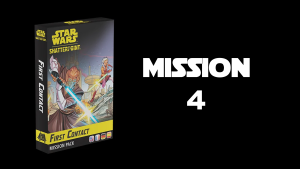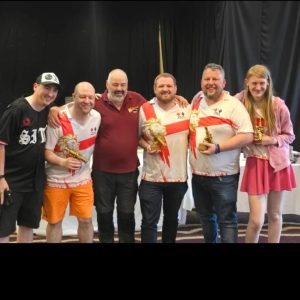In this article I will be continuing my series on being a Great Dungeon Master! If you haven’t had the chance check out the previous article: How to be a Great Dungeon Master: The Art of Collaborative Storytelling.
As Dungeon Masters, we wear many hats: storyteller, referee, worldbuilder, and occasionally, peacekeeper. But before you jump into your first adventure, there’s a vital step that often gets overlooked—Session Zero.
This session is where some of the foundation of your campaign is laid, ensuring that both you and your players are on the same page about everything from the tone of the game to the rules you’ll follow. A well-planned Session Zero can go a long way in creating a smooth, successful campaign where players feel engaged and excited about the story, you’re all going to tell together.
Why Session Zero is so Important

The reason for a Session Zero is simple: it’s the foundation of your story where you, as the DM, and your players can discuss the details of the game before anyone rolls a die. It’s an opportunity to set the tone of the campaign, address everyone’s expectations, and avoid potential conflicts before they arise. It may seem like overkill especially if you feel like you know all the players but for sure something will come up that you’ll be glad you caught. Setting your expectations and that of your players will be key to having a fun campaign. Let’s get started!
Campaign Tone
First, you’ll want to clarify what kind of story you plan to tell. Is it going to be a lighthearted romp with comedic moments, or something darker with high stakes and grim consequences? While many campaigns naturally blend elements of humor and drama, it’s important to establish the primary tone from the outset. Unaligned expectations here can lead to frustration later. If one player envisions an intense, character-driven narrative and another wants a lighthearted dungeon crawl, they’ll inevitably have conflict.
To help clarify the tone, you can offer comparisons to media the players are familiar with. Are you aiming for a campaign that feels like Lord of the Rings, Inglorious Bastards, Color Out of Space or Guardians of the Galaxy? This can help players calibrate their characters and expectations to fit the world you’re building.
Player Expectations
Every player approaches tabletop RPGs differently. Some are in it for the story and role-playing, while others might prioritize combat, puzzles, or exploration. Session Zero is the time to ask your players what they’re hoping to get out of the campaign. You might have a group that’s deeply invested in character development, or perhaps they’re more interested in strategy and tactics. Understanding these preferences early allows you to design sessions that appeal to everyone.
Here are some helpful questions to ask players:
- “What’s your favorite part of playing an RPG?”
- “How much combat vs. role-playing are you hoping for?”
- “Is there anything specific you love seeing in a campaign?”
This process isn’t just about meeting individual needs—it’s about finding a balance. Every player’s preferences might be different, and your job as DM is to create a cohesive experience.
Setting Group Boundaries
Boundaries are just as important as expectations, especially when it comes to content that could make players uncomfortable. RPGs often touch on difficult themes—violence, trauma, betrayal, and more. We often joke on Iron and Tentacles that we are using sessions as our therapy… but there is more truth to that then you know.
Use Session Zero to discuss what’s off-limits for your group. This helps avoid any unwanted surprises during the campaign. There are several tools you can use to make this easier:
- X-cards: A simple system where any player can tap the X-card if they feel uncomfortable, and the scene or topic changes immediately.
- Lines and Veils: Lines are hard boundaries (content that won’t appear in the game), while veils are topics that can exist but are never directly shown (e.g., violence might happen, but it’s never described in detail).
By discussing these things early on, you create a safer, more comfortable environment for all players, ensuring that the focus stays on fun and storytelling.
Your DM Style – How to Communicate It

Every Dungeon Master brings their own unique style to the table, and Session Zero is the perfect time to explain how you plan to run the game. Are you someone who sticks strictly to the rules, or do you prioritize storytelling and go lighter on the exact situational ruling? Establishing your DM style up front helps set player expectations and minimizes misunderstandings.
Playing by the Rules
If you’re a DM who loves the mechanics of the game and enjoys sticking to the rulebook, let your players know that this will be your guiding principle. Explain that rules are there to create a fair and balanced experience, and that consistency in applying those rules helps maintain that fairness. This doesn’t mean the game won’t be fun or creative, but it does mean that mechanics will take priority when necessary.
Example:
“I like to run a game that follows the rules as closely as possible. This means that if a rule says something happens a certain way, we’ll stick to that unless we find it really bogs things down.”
This style appeals to players who enjoy the tactical side of the game and ensures that rulings are consistent across sessions.
Storytelling First
On the other hand, some DMs prefer to let the story drive the game, even if it means bending or ignoring certain rules. If this is your approach, explain to your players that your goal is to create an immersive, engaging narrative, and that sometimes the rules might take a back seat in favor of a better story.
Example:
“For me, the story is the priority. I’ll always lean toward what makes the story more interesting, even if that means tweaking (or ignoring) the rules a bit. If the narrative flows better without strict adherence to mechanics, I’ll always choose story.”
Players who enjoy role-playing and improvisation will thrive in this environment, where creativity and storytelling are prioritized.
Exploration-Focused
If your campaign is centered around world exploration—discovering new places, lore, and secrets—explain how this will shape the sessions. Players can expect rich environments, hidden details, and a world that reacts to their decisions. You can also have players to contribute to the world-building process during Session Zero with things like back stories and experiences.
Example:
“This campaign will be very exploration-focused, so I’ll reward curiosity and creative problem-solving. If you go off the beaten path, you might discover hidden curiosities, treasure, or challenges.”
This style works well for players who enjoy solving puzzles, uncovering mysteries, and interacting with the environment.
Balanced Style
Many DMs prefer a balance between storytelling and rules. If this is your style, explain how you’ll strive to keep both in check, allowing for flexibility while still ensuring that the game stays fair and grounded in its mechanics.
Example:
“I like to keep things balanced. We’ll follow the rules, but I’m happy to bend them when the story calls for it. I’ll make sure the game stays fair, but I’m also open to collaborative storytelling.”
This middle-ground approach appeals to players who appreciate both structure and creativity, ensuring that no aspect of the game is neglected.
Understanding Player-Driven vs. DM-Driven

It’s also important to communicate whether your campaign will be more sandbox (player-driven) or DM-driven (with a more linear progression). In a player-driven game, the world is more open-ended, and players decide where to go and what to do. In a DM-driven campaign, the story is more guided, with the DM leading players toward specific goals or events.
- Player-Driven: “This will be a sandbox campaign, so your decisions will drive the story. You’ll have a lot of freedom to explore and shape the world.”
- DM-Driven: “This campaign will have a more direct narrative, with a clear storyline. There will still be choices, but I’ll be gently rerouting you back on task.”
By explaining how the campaign will be driven, you set the expectations for how the game will unfold and ensure that players know what to expect from you and the sessions.
Player Expectations and Collaborative World-Building
Session Zero is also a fantastic opportunity to involve your players in building the world they’ll be playing in. Collaborative world-building not only makes players feel more invested, but it also gives you a ton of material to draw from during the campaign.
Collaborative World-Building
Start by inviting players to contribute ideas about the world. This can be as simple as asking them to create a region or faction their character is connected to or as in-depth as letting them develop entire towns or cultures. When players help build the world, they feel a deeper connection to it.
Example questions for players:
“Does your character come from a city or a more rural area? What’s the culture like there?”
“What’s the relationship between your character’s homeland and the major players in the world?”
“Is there a faction your character is tied to? What’s their role in the world?”
By asking these questions, you’ll get a sense of what excites your players and what areas of the world they find most engaging. These details can be woven into the campaign’s broader narrative, creating a more immersive and personalized experience.
Character Backstory

Another key aspect of Session Zero is understanding and finding ways to integrate character backstories into the world and the campaign. As the DM, it’s your job to ensure that every character has a place in the story and that their personal goals affect the campaign’s plot. This not only invests players but also provides you with things to draw upon during the game.
To accomplish this, encourage players to think about how their character fits into the world:
“How did your character get involved with this group?”
“What’s a personal goal or dream your character is pursuing?”
“Are there any characters (NPC or PC) or organizations your character has a history with?”
By connecting character backstories to the campaign world, you give players personal stakes in the story and create more opportunities for role-playing and deep connections.
There are Rules in this House Mister

Every group has its own set of house rules, and Session Zero is the perfect time to establish them. Whether you’re making small tweaks to the core rulebook or introducing entirely new mechanics, it’s important to get everyone on the same page before the game begins.
Rule Clarifications
First, clarify how you’ll oversee certain rules that can be interpreted in multiple ways. For example, will you allow critical fumbles (where rolling a 1 on a d20 leads to a disastrous outcome), or will you keep things simple? How will you manage death saves or resurrection? Will you include optional rules from the game system, such as flanking or variant encumbrance rules? Will you be ignoring rules all together?
Here are some common house rule topics to cover:
- Critical Hits/Fumbles: Will a natural 20/1 have additional special effects, or will they just be successes/failures?
- Death and Resurrection: How will death saves be handled, and what are the consequences of death in the game?
- Magic System Tweaks: Will you implement any modifications to spellcasting rules, components, or spell slots?
- Combat Rules: Will you use flanking bonuses or alternative combat strategies?
Having clear usage on rules will prevent confusion and ensure that everyone knows how the game will be run.
Dealing with Conflict
Inevitably, conflicts will arise during a long campaign, whether it’s between characters or players. Use this time to discuss how you’ll handle in-game and out-of-game conflicts. Establish a clear process for resolving issues and make it known that open communication is key.

Some DMs prefer to handle character conflicts in-game, letting the story resolve the tension. Others prefer to take it out of the game and have a frank discussion with the players. Decide what works best for your group and stick to it. Here are some resolution ideas and examples for you to work with
Conflict Resolution Strategies Cheat Sheet
In-Game Conflict Between Characters
It’s common for characters to disagree or clash within the story, and this can lead to memorable role-playing moments. However, it’s important that these conflicts don’t negatively affect the players themselves. Here’s how to manage it:
Encourage Role-Playing Through Conflict: Let characters explore conflicts organically within the game as long as everyone is comfortable with it. Make sure that disagreements are framed as character-driven, not player-driven.
Resolution Strategy: Have a group discussion about how far these conflicts should go. Create a safe space for players to voice if they’re uncomfortable, using tools like a “pause and discuss” system. Remind players that the conflict should serve the story, not disrupt it.
Find Common Ground: If the conflict between characters becomes too disruptive, help them find a common in-world goal. This could involve giving them a scenario where they must work together to survive or succeed, forcing cooperation and helping ease the tension.
Resolution Strategy: As the DM, you can weave plot elements that encourage teamwork, such as shared enemies or a situation that requires all party members to contribute their skills.
Out-of-Game Conflict Between Players
Player conflicts are trickier because they can affect the entire atmosphere of the group. It’s important to resolve these quickly and diplomatically.
One-on-One Conversations: If two players are at each other, consider speaking to each of them privately to get an understanding of what’s going on. Sometimes, simply listening to both sides and allowing them to explain their feelings can de-escalate tension.
Resolution Strategy: Use active listening and empathy. After talking to each player, offer possible solutions that don’t disrupt the game for others—such as changing in-game dynamics or offering a compromise.
Group Discussion: Sometimes, conflicts arise from misunderstandings about game expectations or behavior at the table (ex. someone hogging the spotlight, ignoring rules, or making others uncomfortable through words or actions). In these cases, it’s helpful to address the issue openly with the group.
Resolution Strategy: Use Session Zero to establish table rules, like respecting speaking turns or handling disagreements. Revisit these rules during the campaign if issues arise. Encourage open communication and set the tone that everyone’s enjoyment matters.
Take 5: If tension escalates during a game session, it’s okay to call for a break. This can give players time to cool off (and eat… hunger can sometimes be the trigger) and gain perspective, avoiding further escalation.
Resolution Strategy: Have a “Take 5” protocol in place where, if things get too heated, the game is paused for a few minutes to allow everyone to reset.
Differing Playstyles or Expectations
Sometimes, conflict arises from players having different preferences for how they want to play the game. One player might be very focused on combat, while another is more interested in role-playing or exploration. In last week’s post I covered the different player types and how to work with them as a DM.
Balance Playstyles: Understand these differences and find a balance that allows each player to enjoy the game. For example, if some players enjoy role-playing and others don’t, alternate between combat-heavy sessions and sessions with more narrative focus.
Resolution Strategy: Use Session Zero to get a sense of what each player is looking for. During the campaign, pay attention to players’ engagement levels and adjust sessions accordingly. In a conflict, remind players that the game is a shared experience, and everyone should have moments to shine.
Set Clear Expectations: Conflicts can arise when players expect different levels of realism, difficulty, or tone from the campaign. One player might want a light, fun game, while another is expecting high-stakes drama.
Resolution Strategy: In Session Zero, clearly define the campaign’s tone and boundaries, and revisit this if conflict arises. Ensure that everyone understands and agrees to the style of play.
Rule Disputes
Disagreements over rules and rulings can lead to friction at the table as well, especially if players feel a ruling was unfair.
Establish a Path for Disputes: In Session Zero, agree on a method for handling rule disputes. One approach is to allow a quick discussion at the table, but if consensus can’t be reached, the DM makes a final ruling, which can be revisited after the session if needed.
Resolution Strategy: Consider using a “dispute path” rule—if a rule dispute arises during play, give a ruling to keep the session moving, and agree to look up the proper rule later. Once clarified, apply the correct ruling in future sessions.
Group Consensus: For rules that aren’t critical, encourage the group to decide together. This can help prevent a single player from feeling targeted or ignored.
Resolution Strategy: If a dispute affects the group as a whole (ex., group stealth checks), involve all players in resolving it. Voting can work for more subjective rulings, but it’s important that the DM has the final say for consistency.
Managing Spotlight Time
Another way conflicts arise is when one player feels like they aren’t getting enough time in the spotlight, while another dominates the session.
Share the Spotlight: As the DM, part of your role is to make sure that everyone gets a chance to shine, and this can be hard sometimes. If a player is hogging the spotlight either intentionally or through no fault of their own, gently steer the focus toward other characters by involving them in key moments or creating scenes tailored to their abilities or backstory.
Resolution Strategy: Use “round-robin” style role-playing during crucial decision points so that everyone has a say. During combat, ensure each player has a role that allows them to feel important.
Encourage Teamwork: Create situations where characters must rely on each other’s skills and abilities to succeed. This ensures that all players feel included and valuable to the group. So, maybe one character is doing the talking but, the others have critical roles in the outcome.
Resolution Strategy: Design encounters or scenarios where multiple characters need to work together, making it impossible for one player to solve everything alone.
Bonus Tip: Establishing a Conflict Resolution Plan During Session Zero
During your Session Zero, one of the most useful things you can do is lay the groundwork for how conflicts will be handled. Discuss with your group how they’d like to address disagreements and ensure everyone is on the same page.
Having a clear plan gives the group a framework to fall back on when conflicts arise, ensuring that these moments don’t disrupt the fun or create lasting tension.
Character Creation

Although Session Zero is about more than just character creation, this is still one of the most important elements of the session. It’s your chance to guide players through creating characters that fit the campaign and work well with the group.
Does it work with the Campaign
When players create their characters, help them by making sure their backstory and goals align with the campaign’s overall story. If the campaign is centered on political intrigue, a rogue with connections to a spy network makes sense, but a barbarian with no interest in social dynamics might feel out of place. Work with each player to develop a character that will fit the campaign’s tone and setting. Have your players think about the following:
- Character Motivation: Why is their character invested in the campaign’s events? What drives them?
- Ties to the World: Does their character have connections to any other characters, factions, or regions?
- Group Cohesion: How does their character fit with the rest of the party? Do they have complementary skills or personalities?
By ensuring that each character has a reason to be part of the group and the story, you create a more cohesive campaign experience.
Balancing the Party
During Session Zero, help players build characters that complement each other. If one player is creating a heavily combat-focused fighter, suggest that another player consider a character with more utility or support abilities. Have your players think about the following:
- Class Roles: Does the group have a good mix of combat, magic, and skills?
- Personality Balance: How will the characters interact with each other? Is there potential for conflict or strong bonds?
- Skills and Abilities: Make sure that the party has a variety of skills, so they’re prepared for different types of challenges.
By guiding the players towards a balanced party, you’ll ensure that everyone has a chance to shine.
Ok Jay, Wrap it up….
A successful campaign starts with a strong foundation, and Session Zero is the key to building that foundation. By taking the time to align player expectations, set boundaries, and establish your DM style, you ensure that everyone is on the same page before the first session. Collaborative storytelling and clear communication all contribute to creating an immersive, enjoyable experience for both you and your players.
As the campaign progresses, you’ll be glad you invested the time in Session Zero. Players will be more engaged, the world will feel more alive, and you’ll have the tools you need to navigate any challenges that arise.
So, take a breath, gather your players, and dive into Session Zero—you’re setting the stage for something great.





